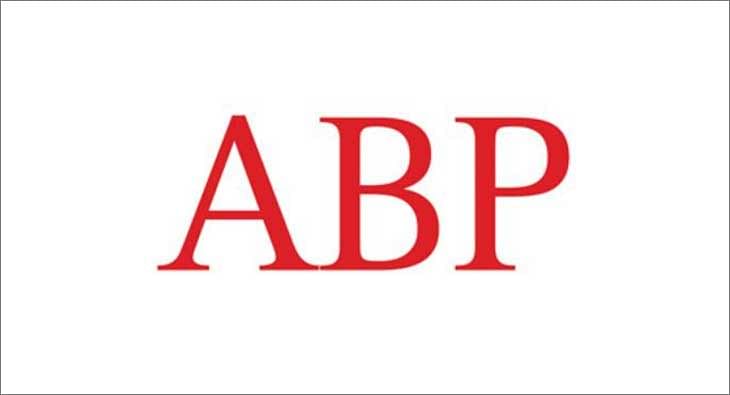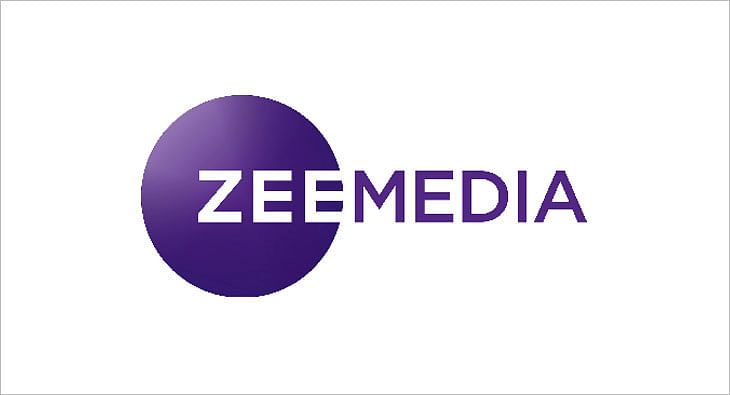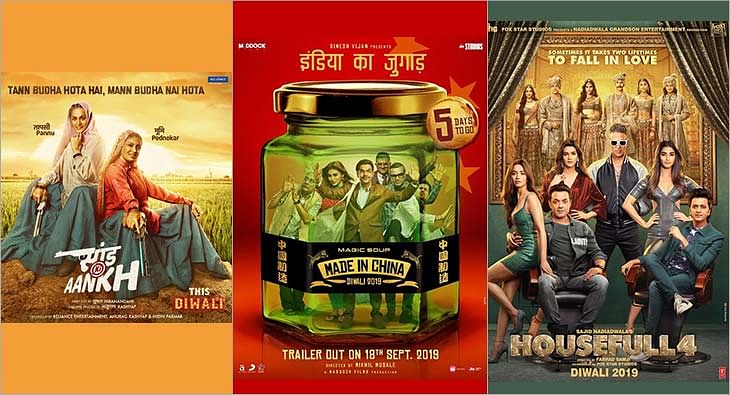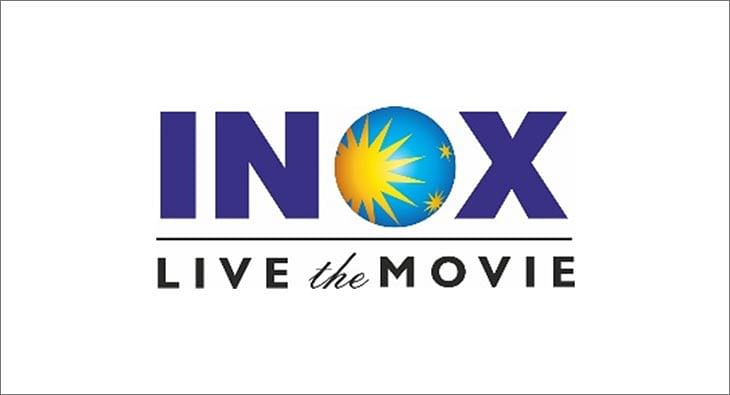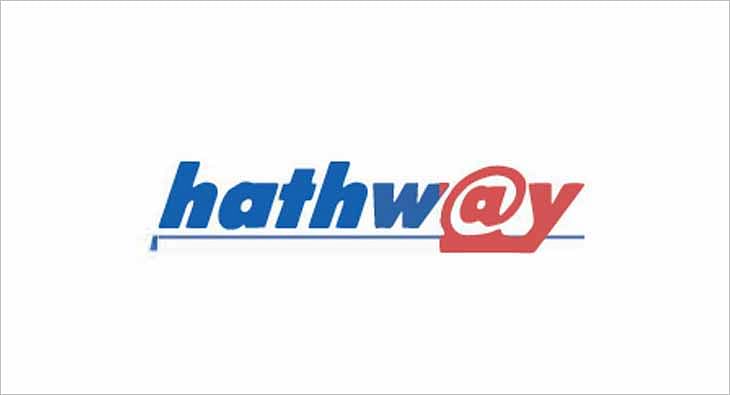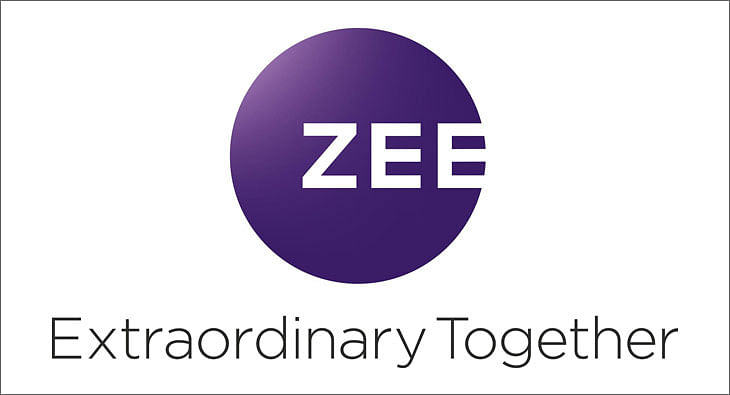Vivid: Social media and racism - The Miss America Story
Annurag Batra of exchange4media talks about the unfortunate incident on social that followed Indian-origin Nina Davuluri winning the Miss America title and racism that prevails in the world even today

The dark side of the media came alive once again amid an otherwise proud and celebratory moment. As India-born 24-year-old Nina Davuluri was crowned Miss America, the first Indian American to hold the title. Social media went abuzz with racist slurs, displaying not just abuse but hatred and above all, ignorance. Celebrations for Davuluri were marred by comments that called her “Arab”, “terrorist” and linking the win with the 9/11 attacks in the US.
“And the Arab wins Miss America. Classic,” tweeted @Granvil_Colt, minutes after the usual final flourish ended, followed by comments like, “Ummm wtf? Have we forgotten 9/11?” asked @anthonytkr. Some called her Miss Al Qaida and others dubbed her Miss Terrorist. “How the f*** does a foreigner win miss America? She is a Arab!” followed up @jakeamick5. “Miss America? You mean Miss 7-11,” wrote a racist individual, referring to the widespread ownership and management of convenience stores by people of Indian-origin. “Miss America is brought to by their sponsors PF Changs and 7-11,” jeered another. ‘I am literally soo mad right now a ARAB won. #MissAmerica,” wrote DallasRobinson8, who followed the first tweet with, “Only reason she won is bc her people said they would lower gas prices.” (Sic)
It appeared lost on those writing such comments that Davuluri’s father Koteshwara Choudhary, migrated to the US in 1981 and is a gynaecologist in Fayetteville, New York. Davuluri herself has a degree in Brain Behaviour and Cognitive Science from the University of Michigan, and aspires to be a cardiologist, a goal for which she pledged the $50,000 prize money she won with her crown. She remained poised and gracious and dismissed the comments saying, “I have to rise above that. I always viewed myself as first and foremost American.”
It is beyond doubt that racism and sexism are well alive in America, despite the country having come a long way from the civil rights struggle by the Blacks in 1960s, and its first Black President serving his second-term in the office currently. Despite being a diverse country, post-9/11 the minorities in the United States have often come under attack and continue to be discriminated in social and political spheres. The rise of governors like Bobby Jindal has been an exception.
However, the present issue has two dimensions to itself, concerning not just the US but the world. The first is the continuation of association of dark skin with ugliness and white skin as being pure and desirable, the paradigm of beauty. Today, the fairness creams sell like hot cakes in the beauty market, along with products that vouch for the white beauty. This is a trend world over. The ‘White Man’s Burden’ continues in terms of defining ‘beauty’ and this is accepted by non-white people in the millions perhaps because of a colonial mentality that accepts western colonialists as superior whom they wished to imitate. Its culture equates fair skin to beauty and high social status. America’s television star Oprah Winfrey also recently came face to face with the racism that still exists in Europe. She was in a shop in Zurich and wanted to see a purse. The salesgirl, who didn’t recognize who she was, allegedly told her that it was too costly and that “she won’t be able to afford it”. This case was not violent, but shows how the salesgirl made a snap judgment about Oprah’s wealth based on the colour of her skin.
There is as much racism in India as in America perhaps. In India, matrimonial adverts openly mention the desired colour of the prospective bride which cannot be otherwise than fair. In 2010, India’s whitening cream market was worth 432 million dollars and had an annual growth of 18 per cent. Cricket players and Bollywood stars regularly lend their face and voice to the advertisements for these products.
This acceptance of standardised beauty norms resulted in part from mind conditioning and racists slogans such as one mentioned above. The Western colonial regimes left their mark on the cultures of the people they once ruled. And today, globalisation and the aggressive marketing of western products and brands encourage people of other cultures to adopt western fashion in standards of beauty. It has been forgotten that beauty is in the spirit and personality of an individual, regardless of the colour of the skin.
The second is the unmasking of the ugly face of social media. The medium is popular with youth, more so because anonymity can be maintained while unleashing opinions and abuse. Cyber-bullying is a worrying but growing trend. Social media does come with the freedom of speech but it is harming and discriminating others through words and pictures. However, this reflects minds unable to accept change that is coming in form of growing contribution of the minorities and recognition of it in some part in countries like the US.
Slow change can also been seen in pageants like Miss America. The competition started in 1921 as a gimmick to get people to hang out in Atlantic City after Labour Day – at the time it was charmingly called ‘The Most Beautiful Bathing Girl in America’. By the 1950s, it became conflated with everything that America stood for. Miss America is meant to represent the values Americans are supposed to hold dear – a female face and body to project onto the hopes and dreams of the nation. And throughout the pageant’s history, that female body has typically been thin, conventionally attractive – and almost always white.
Ideas about what kind of woman could adequately represent America have evolved over time. Originally, non-white women were not allowed to participate in the contest. It wasn’t until 1970 that a black woman competed. Since 1983, eight African-American women have worn the Miss America crown. And in 2001, the title went to Hawaii-born Filipino Angela Perez Baraquio.
What was different about the Miss America pageant this year was it being a celebration of diversity with many South-Asian participants taking the lead. Davuluri herself thanked her fellow citizens for celebrating diversity. But comments like the ones dropped on her reflect the inability of the same people to accept change and let go of the patriarchal mindsets that come in way of their own development.
Davuluri’s win need to be celebrated for many reasons – it represents the inclusion of minorities among the dominating Whites, giving a sense of hope to those who remain on the fringes of the society that they can demand their rights both, constitutional and human. Above all, her win symbolises that being dark skinned is not about being ugly; it represents humanity as much as the white skin and a tiny waist does.
The author is Chairman and Editor-in-Chief of exchange4media Group
Read more news about (internet advertising India, internet advertising, advertising India, digital advertising India, media advertising India)
For more updates, be socially connected with us onInstagram, LinkedIn, Twitter, Facebook Youtube & Whatsapp
You May Also Like
HT Media posts Consolidated Total Revenue of Rs 580 crore in Q2
Chairperson and Editorial Director Shobhana Bhartia says due to lower commodity prices and control on costs there has been an improvement in operating profit
HT Media has posted a Consolidated Total Revenue for Q2, 2020 at Rs 580 crore.
As per a statement released by the company, EBITDA for Q2’20 increased by 139%, and margins at 14% vis-à-vis 6% in previous year. This has been driven by softening of newsprint prices and continued focus on cost.
The Net Cash position at a consolidated level continues to be strong.
The Print ad revenue has declined due to sluggish volumes, even as yields have improved. National advertising continues to be soft, although local advertising witnessed growth.
Savings in raw material costs have driven improvement in EBITDA margins.
Chairperson and Editorial Director Shobhana Bhartia said, “Slowing economic growth has hit advertising spends in key categories, putting pressure on revenues across the media industry. As a result, our Print and Radio (on like to like basis) businesses saw revenues dip as compared to a year-ago. However, thanks to lower commodity prices and a tight control on costs, we saw an improvement in our operating profit. On the digital front, Shine, our online recruitment portal has shown good progress and continues to grow. Our outlook for the coming quarter remains cautious, given overall economic sentiment and macroeconomic trends. Cost-control and falling commodity prices should help protect our margins.”
Read more news about (internet advertising India, internet advertising, advertising India, digital advertising India, media advertising India)
For more updates, be socially connected with us onInstagram, LinkedIn, Twitter, Facebook Youtube & Whatsapp
ABP Group posts Rs 15.70 crore as net profit in Q1 FY20
The group’s total operating income stands at Rs 365.55 crore
ABP Group has posted a net profit of Rs 15.70 crore in the first quarter of FY20, as per media reports.
The group’s total operating income stands at Rs 365.55 crore.
It’s net profit for the fiscal ended March 31, 2019, was down 68% to Rs 31.90 crore compared to the previous fiscal.
The Profit Before Interest Lease Depreciation and Tax (PBILDT) has also dropped 53.52% to Rs 107.12 crore.
The group has six news channels - ABP News (Hindi), ABP Ananda (Bengali) ABP Majha (Marathi) and ABP Asmita (Gujarati), ABP Sanjha (Punjabi) and ABP Ganga (Hindi).
Read more news about (internet advertising India, internet advertising, advertising India, digital advertising India, media advertising India)
For more updates, be socially connected with us onInstagram, LinkedIn, Twitter, Facebook Youtube & Whatsapp
Zee Media posts consolidated revenue of Rs 137.03 crore for Q2 FY20
ZMCL has recorded 4.4% growth in operating revenue for first half of FY20
Zee Media Corporation Ltd (ZMCL) has posted a 4.4 per cent growth in operating revenue to Rs 337.6 crore in the first half of FY20, as per media reports.
It has reported a consolidated revenue of Rs 137.03 crore for Q2 FY20.
In a statement, ZMCL has said: “During the quarter, the network expanded its footprint s into Southern India through the launch of Zee Hindustan in Tamil and Telugu languages. This is intended to make the network's content accessible to wider audience.”
The operating expenditure in Q2FY20 has dropped by 21.7 per cent.
The statement further said: “EBITDA for HlFY20 improved by 34.1 per cent to Rs 1,029 million from Rs 767.5 million EBITDA for H1FY19, while the same declined by 9.4 per cent to Rs 370.2 million from Rs 408.7 million for the corresponding period last financial year. EBITDA Margin grew from 23.7 per cent in H1FY19 to 30.5 per cent in HlFY20, while growing from 24.2 per cent in Q2FY19 to 27 per cent in Q2FY20.”
Read more news about (internet advertising India, internet advertising, advertising India, digital advertising India, media advertising India)
For more updates, be socially connected with us onInstagram, LinkedIn, Twitter, Facebook Youtube & Whatsapp
No slowdown here: In-cinema ad rates up by at least 50% for 3 big Diwali releases
Housefull 4, Made In China and Saand Ki Aankh ready to hit the silver screen this week, with the hopes of giving brands the eyeballs they look for in theatres
It’s that time of the year again when theatres gear up to pocket maximum gains. Diwali is here and there are three films ready to hit the silver screen this week--Housefull 4, Made In China and Saand Ki Aankh. The festive period brings much joy to exhibitors, distributors and theatre owners because it ensures footfalls, giving brands the eyeballs they look for. In fact, industry experts don’t feel that economic slowdown this year has impacted in-cinema advertising. While they are concerned about three movies clashing during Diwali, they predict 50-100 per cent rise in ad rates during this period.
Advertising moolah
Mohan Umrotkar, CEO, Carnival Cinemas, is expecting 60-70 per cent surge in advertisement topline compared to last year. “Going by the buzz and advance booking for these three releases, market is bullish. Advertisers have blocked most of the advt-slots during the festival period. Housefull 4, Made In China and Saand Ki Aankh all combined together should generate around Rs 350 crore topline at the box office during the festival week. We are expecting 60-70 per cent surge in the advertisement topline from last year. Also, this year we have added around 14 per cent new advertisers, and 4 per cent of them are first-time cinema advertisers,” he says.
But according to Siddharth Bhardwaj, Chief Marketing Officer - Head of Enterprise Sales, UFO Moviez, things have changed a lot in the last couple of years. “Since some films have not really lived up to their expectation, advertisers are spreading the spends all through the year. They are picking up far more number of titles in the year rather than focusing only on Diwali or Eid.”
“It is good for the industry because you can monetise the inventories beyond just big weeks. A lot of content- driven films have come up which has given us the opportunity to monetise more markets. It has put lesser pressure on Diwali. Most of the cinemas are sold out for Diwali. It becomes difficult to accommodate everything,” Bharadwaj opines. He also reveals that for this week, the inventories are already full.
Diwali ad rates
Experts reveal that ad rates differ from property to property and depends on location as well. But Diwali surely sees a massive hike in rates. This year, theatre owners are expecting 100 per cent rise in ad rates. While Umrotkar revealed that for Diwali, they are charging 100 per cent higher than the regular card rates, Girish Johar, trade analyst and film producer, shared that even the rates for putting up kiosks of brands go up during festivals like Diwali.
“It’s based on property. On a ballpark, ad rates double up. So if you are putting up a kiosk, they charge say Rs 50,000-25,000 for a month. During Diwali, they charge almost double because of the kind of footfalls theatres witness,” Johar revealed.
Economic slowdown? Not for Cinema!
This year, brands have been pulling back their spends on other mediums due to economic slowdown, but cinema seems unaffected. Calling entertainment business recession-proof, Johar explains, “If you see the other side, box office is up by 15-20 per cent. Yes, it is a bit subdued because the brands are in a wait-and- watch scenario. They are increasing their focus around consumption rather than awareness.”
Bharadwaj too seconded it by saying, “These are challenging times but our medium is very efficient. If you see economy has slowed down, but the cinema has grown instead.”
Clash cover
Three movies are clashing this Diwali which means shared screens and box office gains.
“It’s never good for us when two or more big-ticket films release together. If they would have come on different dates, there are chances that more advertisers will take advt. inventory in those weeks separately instead of that one particular week,” shares Umrotkar.
Read more news about (internet advertising India, internet advertising, advertising India, digital advertising India, media advertising India)
For more updates, be socially connected with us onInstagram, LinkedIn, Twitter, Facebook Youtube & Whatsapp
INOX Leisure Ltd sees 42% growth in total revenue
Profit After Tax up 327% to Rs 51 crore
INOX Leisure Ltd (INOX) has reported financials for the second quarter ending September 2019.
Its total revenue has risen to Rs 524 crore with a 42% growth from Rs 369 crore in the corresponding quarter in FY19. Its EBITDA has more than doubled to Rs 107 crore with a 121% growth, while the PAT stood at an impressive Rs 51 crore, up 327% from previous year’s second quarter.
Siddharth Jain, Director, INOX Group, said: “At INOX, setting new benchmarks is now a routine, thanks to our consistently sharp focus on luxury, service and technology and our uncompromised desire to offer our patrons, nothing but the latest and the best! We are delighted with our remarkable consistency on all parameters, and we are sure about maintaining the momentum and focus on innovativeness. Content once again proved that why we term it as the ‘hero’. Thanks to the creators of such spellbinding movies, which keep inviting our guests to our properties, and allowing us to pamper them with our signature hospitality. With the launch of Megaplex, we are delighted to further our endeavor of developing experience-driven cinema destinations of global standards, and we will continue to do so. On behalf of Team INOX, I assure all our stakeholders that we will continue to break barriers and exceed all expectations.”
Read more news about (internet advertising India, internet advertising, advertising India, digital advertising India, media advertising India)
For more updates, be socially connected with us onInstagram, LinkedIn, Twitter, Facebook Youtube & Whatsapp
Hathway Cable & Datacom reports 100% subscription collection efficiency in Q2
The broadband subscriber base has increased from the previous quarter’s 840,000 to 860,000
Hathway Cable and Datacom has reported subscription collection efficiency at 100%, and the broadband subscriber base has increased from previous quarter’s 840,000 to 860,000 in quarter ending September, as per media reports.
It has narrowed its consolidated net loss by 74% and the operating EBITDA has been reported 15% up to Rs 107.5 crore compared to Rs 93.1 crore a quarter ago.
The total income has dropped 2%, while the expenditure is down 6%.
In the financial results, the company has said the FTTH markets are leading growth in customer acquisition.
Read more news about (internet advertising India, internet advertising, advertising India, digital advertising India, media advertising India)
For more updates, be socially connected with us onInstagram, LinkedIn, Twitter, Facebook Youtube & Whatsapp
ZEEL posts 7.4% YoY growth in total revenue for Q2 FY20
ZEEL's domestic advertising revenue has grown 1.4% YoY in Q2FY20
Zee Entertainment Enterprises Limited (ZEEL) has reported a consolidated revenue of Rs 2,122 crore for the second quarter of FY20, recording a growth of 7.4% on YoY basis.
The Earnings Before Interest, Tax, Depreciation and Amortization (EBITDA) was recorded as Rs 692.9 crore with an EBITDA margin of 32.7%. PAT for the quarter was Rs 413.2 crore. The Profit After Tax (PAT) for the quarter was Rs 413.2 million, with a growth of 6.9% YoY.
During the second quarter, ZEEL’s consolidated advertising revenue grew by 1.2% YoY to Rs 1,224.7 crore. The domestic advertising revenues grew by 1.4% YoY to Rs 1169 crore.
ZEEL has posted 26.8% YoY growth in Q2FY20 domestic subscription revenue. ZEEL’s consolidated subscription revenue grew by 19.0% to Rs 723.5 crore during the quarter.
ZEEL’s total expenditure in Q2FY20 stood at Rs 1429.1 crore, higher by 9.9% YoY compared to Q2FY19.
While ZEE5 recorded a peak DAU (Daily Active User) base of 8.9 million in September 2019, ZEE5 users watched an average of 120 minutes of content on the platform in the same month.
During Q2 FY20, the television network had an all-India viewership share of 18.4%.
During the quarter, ZEEL’s international business revenue was Rs 208.2 crore. The advertising and subscription revenues for international business declined by 4.0% YoY and 21.5% YoY, respectively.
Zee Music Company has registered 7.1 billion views on YouTube in Q2.
Punit Goenka, Managing Director and CEO, ZEEL, said, “I am pleased with the performance we have exhibited during the quarter. Our entertainment portfolio continues to grow from strength to strength across all formats and maintained its leading position. Our television network has emerged stronger post the implementation of tariff order on the back of a strong customer connect and brand pull of its channels. ZEE5 continued to gain traction across audience segments and markets, driven by its compelling content library and expanding list of partnerships across the digital eco-system. This strong operating performance allowed us to deliver industry leading growth in both advertising and subscription despite the tough macro-economic environment. Domestic subscription growth of 27% has reaffirmed the value proposition our television network has built over the years. The impact of tariff order has now largely settled down and has brought increased transparency along with improved monetization. Our domestic advertising revenue growth, though significantly lower than historical trend, is higher than the industry growth. We have witnessed an improvement in ad spends through the quarter and we believe that the onset of festive season along with measures taken by the government will help revive the consumption growth.”
Read more news about (internet advertising India, internet advertising, advertising India, digital advertising India, media advertising India)
For more updates, be socially connected with us onInstagram, LinkedIn, Twitter, Facebook Youtube & Whatsapp




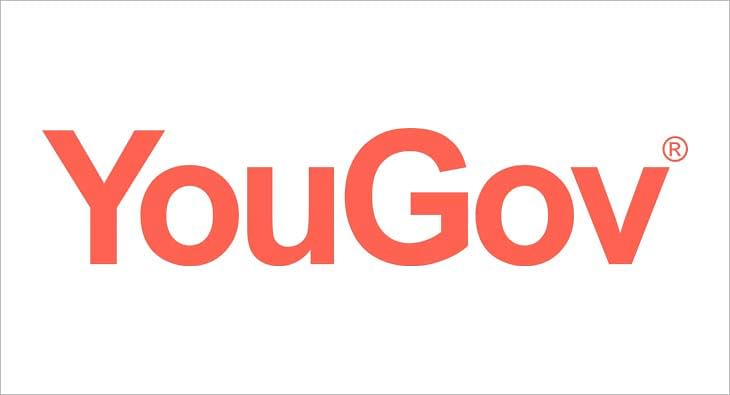
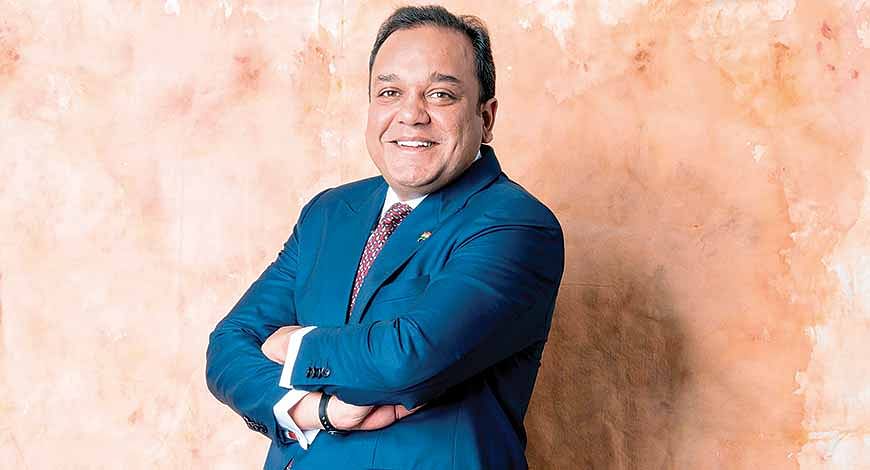
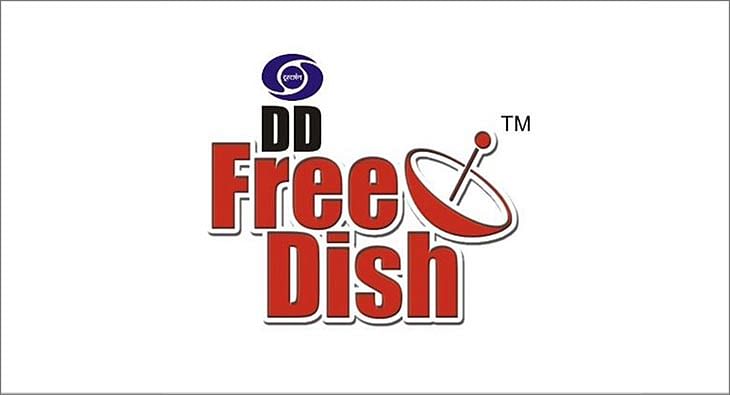







 Share
Share